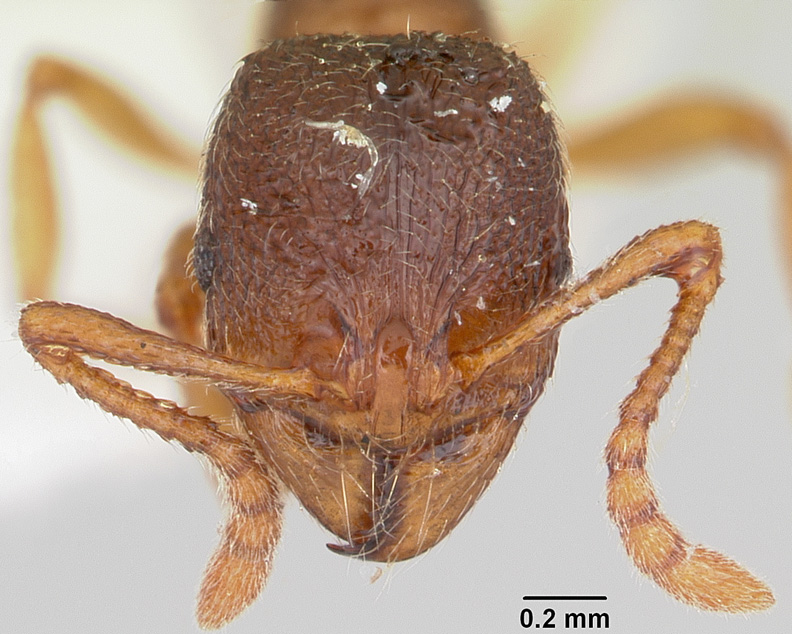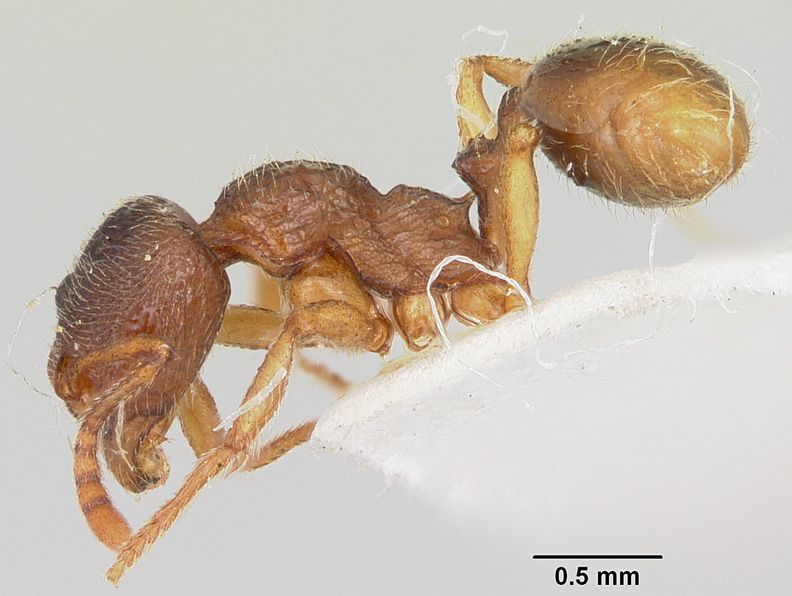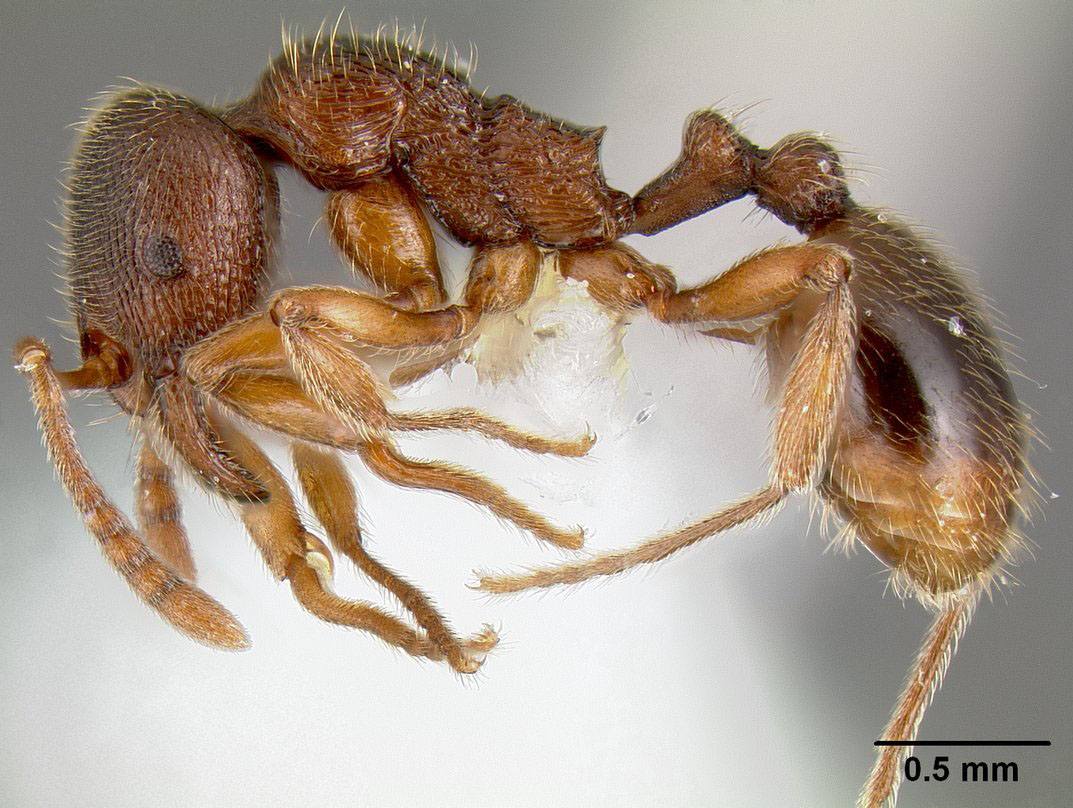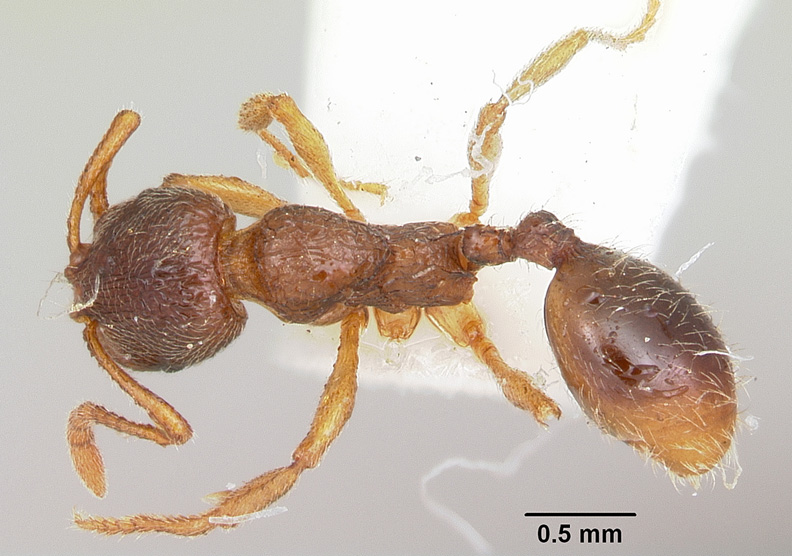Subfamily MYRMICINAE |
|
Stenamma meridionale, full face view of worker (click photo to enlarge). Photo courtesy of http://www.antweb.org/ |
Stenamma meridionale, side view of worker (click photo to enlarge). Photo courtesy of http://www.antweb.org/ |
Stenamma meridionale, side view of worker (click photo to enlarge). Photo courtesy of http://www.antweb.org/ |
Stenamma meridionale, top view of worker (click photo to enlarge). Photo courtesy of http://www.antweb.org/ |
Stenamma is a small genus of primitive ants that is mostly Holarctic in distribution (some species in Central America and the Oriental region). They typically live in forested areas. Foraging is usually restricted to the cool times of the year. Colonies are relatively small, cryptic, and often difficult to find, and therefore, nests are not frequently seen. However, foraging workers can be commonly collected by litter extraction, pitfall traps, or other methods. Generic characteristics are as follows: median area of clypeus abruptly raised and somewhat narrowed, with a pair of fine longitudinal carinae that diverge anteriorly, and the area between these carinae concave to flat; propodeum with a pair of teeth; masticatory margin of mandible has 5 or more teeth or denticles; and antenna terminating in a four segmented club. Six described species and two apparently undescribed species (Ipser et al. 2004) are known to occur in the Southeast. Species level identification is difficult due variation in size, color, and sculpture, and reference material is helpful. Stenamma meridionale is a relatively large, reddish brown species with long, finger-digitiform propodeal spines. Workers range from 3.4 - 4 mm in total length (TL) and queens from 3.9 - 4.6 mm in TL. Both workers and queens have large eyes that are approximately 0.2 mm with 8-10 ommatidia (in greatest diameter of eye) for workers and 0.25 -0.3 with 14-18 ommatidia (in greatest diameter of eye) [measurements from Smith (1957)]. This species is most similar to S. brevicorne, from which it differs by having longer spines, less pronounced rugose sculpture on the promesonotum, and having a wider petiolar node. Recent records of S. meridionale from Mississippi and Alabama specimens were apparently based on misidentifications, and it is now thought that those specimens were actually S. impar. Specimens from this region tend to be larger than typical S. impar, but otherwise appear to agree with the description of that species. Based on collections from these states, this species has not yet been found in either MS or AL. Ipser, R. M., M. A. Brinkman, W. A. Gardner, and H. B. Peeler. 2004. A survey of the ground-dwelling ants (Hymenoptera: Formicidae) in Georgia. Florida Entomologist 87 (3): 253-260. Smith, M. R. 1957. Revision of the genus Stenamma Westwood in America north of Mexico (Hymenoptera: Formicidae). The American Midland Naturalist 57: 133-174. |
|






